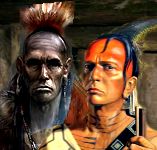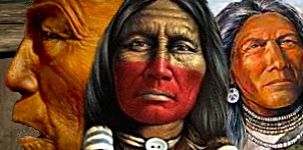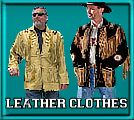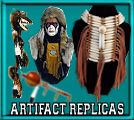 |
|
 |
|||
 |
 |
 |
 |
||
|
|
|||||
      |
Cherokee medicne
|
Artifact Replicas|Jewelry|Clothing|Figurines|Art Prints|On Sale|Closeouts
Custom Search
What's New Cherokee medicne, medicine men and medicine ways.Cherokee MedicineDidanawisgi is the Cherokee word for medicine man. A common thread woven through all Native American remedies is the idea of “wellness” a term recently picked up by some in the modern medical professions. A state of “wellness” is described as “harmony between the mind, body and spirit.” The Cherokee word “tohi” - health - is the same as the word for peace. You’re in good health when your body is at peace. The “medicine circle” has no beginning and no end and therefore represents a concept of “harmonious unity.” Cherokee medicine is a prevention-based system that incorporates the whole person, rather than the cure-based system that is used by most modern doctors of medicine today, which focuses on the disease. It is the belief among American Indian “doctors” that to achieve wellness we must have a strong connection to all things natural and both create and receive harmony not only within ourselves, but also in all our relationships. Once harmony is restored, illness and other health distortions simply disappear. To some, this would be a “cure.” In the Cherokee tradition, this is just good health - the way it should be. Here the goal is to first help the patient recover - to cure the sickness rather than treat the symptoms- to help the patient find his or her balance - the harmony of our living. The ceremony performed is as important as the potion or salve made from the plants or herbs. This is what is now known as holistic healing - a healing of the complete person. The United States Pharmacopoeia, which is the modern doctor's drug Bible, (companion to the Physician's Desk Reference or PDR -the one that lists all the known side effects of every drug used by modern doctors), first appeared in 1820, and listed over two hundred drugs used by american Indians and aquired from natural plants. Those 200 cures represented 90% of what was listed in that first Pharmacopoeia. Since then, 1000s of new drugs have been chemically created in labs which try to replicate and alter the active ingredients in plants already perfected by nature. There is a legend among the Cherokee that tells of the origin of medicine. It tells how the animals and birds met in council to decide what to do about the encroachment of man upon their world and how carelessly he was treating them. One by one they listed ailments and maladies that would afflict the humans. Had they succeeded, humans would surely have disappeared by now. But nearby, listening to the council were the plants and herbs and, not being troubled by the humans, they agreed to supply a remedy for each and every one of the diseases the animals wanted to thrust upon humankind. Cherokee Medicine MenCherokee medicine people can be male or female. They believe there are evil medicine people and good ones. In fact, there are many kinds of medicine people in the Cherokee culture. Just as many modern doctors specialize in one area of expertise, so do most natural healers. Most medicine people are really good at curing some things, and don't even try to cure others. And like modern medicine practitioners, there are still a few general practitioners who will try to treat most things, but will refer you to someone else if it's something beyond their personal knowledge. When something happens outside their realm of understanding, that cannot be explained by the rules of their culture, Cherokee people will say someone has been practicing bad medicine. The Cherokee believe in witchcraft, but not in the context witches are thought of in anglo cultures. There are two kinds of witches in cherokee culture: ordinary witches and killer witches. Ordinary witches are considered more dangerous since a person can never be sure he is dealing with one, and they are more difficult to detect and counteract. They may deceive a medicine person, and cause them to prescribe the wrong cure if not guarded against. One killer witch who is still spoken of often today, and is mentioned in many Cherokee legends of the Cherokee Nation is the Raven Mocker. Cherokee medicine men and women study for many years, and learn specific treatments from a written Cherokee syllabary given to them by their mentors. It is forbidden for anyone to look at this book if it isn't theirs, and it is often written in code, or parts are passed on verbally to keep the whole from falling into the wrong hands. Medicine ceremonies which are incomplete or performed out of context can do more harm than good and in the hands of the untrained can be downright dangerous. Some Cherokee people see only Cherokee medicine people for mental or physical illnesses. Others prefer a combination of treatment from a medicine man and conventional modern medicine. Some Cherokees no longer believe in the powers of traditional medicine people. The Cherokee Medicine Apprentice (tsila)Cherokee medicine (nvwoti) is an ancient system of medical/spiritual knowledge and practices that developed over the last 3,000-4,000 years.Training in Cherokee medicine takes 15-20 years and the apprentice (tsila) needs to master seven interconnected areas of knowledge: 1. Herbal Medicine - an in-depth knowledge of 400-600 plants, their medicinal and ceremonial uses as well as the plants "personality". Many apprentices/medicine people today only know 100-200 of these plants and their uses. 2. Physical Medicine - including the unique Cherokee massage (hiskoliya) using persimmon woodstampers, moxabustion, minor surgery, and midwifery. 3. Dreamwork - not only how to interpret dreams, but how to use them for personal growth, healing, and to gain knowledge. 4. Language/Myths/Laws - Cherokee is a language of amazing subtlety and power. The tsila learns not only the subtleties of every day spoken Cherokee, but a separate "medicine" language. Stories, myths, and laws give meaning to the world and help us to understand our place in the Great Life. 5. Ceremonies - the Cherokee traditionally had 7 major ceremonies, 6 of which marked the important yearly cycles, such as the first new moon of Spring, green corn harvest, mature corn harvest, falling leaves festival, and the beginning of winter/exulting ceremony. Many of these ceremonies are still done today and are as meaningful now, if not more so, than in times past. Ceremonial practice also includes various types of personal, family, community, and national ceremonies that help maintain balance within the individual, the family, the community, and the nation. 6. The laws of nature - keen observers, the Cherokee have for thousands of years paid attention to the world around them. This collected body of knowledge is extensive and it explains why things act as they do and the cause and effect of their interrelationship - why animals behave certain ways,how the sun and moon interrelate, how men and women interact, the nature of water, the fire, the earth (ela), and so on. 7. Conjuring - although there is no really good word in English to describe this, various words -conjuring, magic, manipulation, partially explain this practice. This is the ability to enlist the aid of spirits and elemental powers to change things, to heal or doctor, to "change one's mind", to bring luck and to protect the sick or weak from negative influences. In some Christian churches, this is called faith healing. When the world was still young, the Cherokee (ani yvwiya) received much of their traditional medicine and ceremony from two sources. Stone Clad (nvyunuwi), an ancient wizard (ada'wehi), showed the people the dual nature of life. First he preyed on the Cherokee, then later when they killed him he gave them many of their songs, ceremonies and formulas. The other source of Cherokee medical knowledge was the plants themselves. There is a Cherokee legend to explain Why Men Became Sick and How the Plants and Herbs Saved Them. To the Cherokee, the use of herbs is only one tool of many necessary for regaining one's health. Traditionally it was (and still is) believed that it is crucial to not only heal one's body, mind and spirit, but to re-integrate the ill person with the family, the community and the Earth. This is a holistic perspective beyond our culture's limited understanding. None of us can truly be well unless we recognize our connection to the rest of the Great Life. 
Medicine Man Framed Art Print Catlin, George 18 in. x 26 in. Buy at AllPosters.com |
|
||||||||||||||||||||||||||||||||||||||||||||||||||||||||||||||||||||||||||||||||||||||||||||||||||||||||||||||
| ||||||||||||||||||||||||||||||||||||||||||||||||||||||||||||||||||||||||||||||||||||||||||||||||||||||||||||||||
Site Designed by: Mazaska Web Design
Hosted by: HostIt4You.com
© 1999-2008 AAANativeArts.com
+4
file: cherokee medicine

